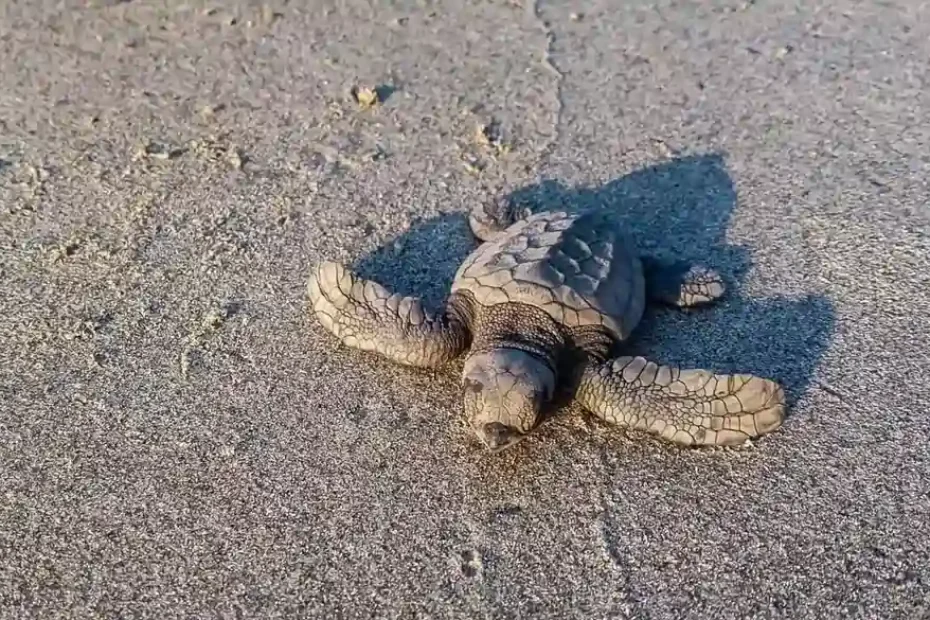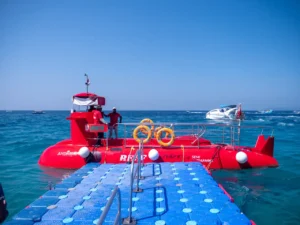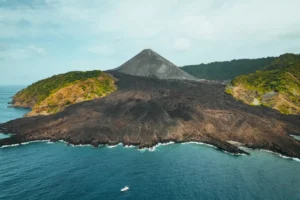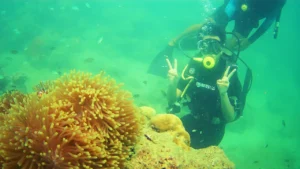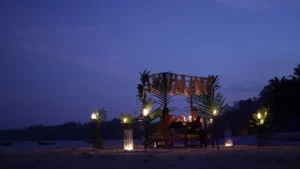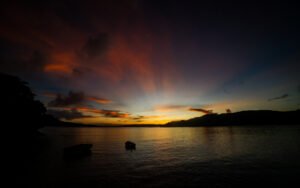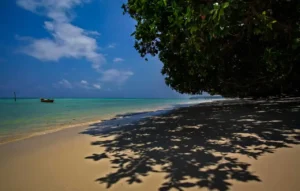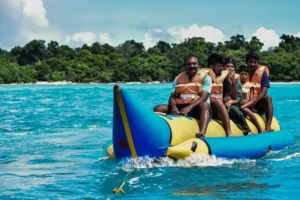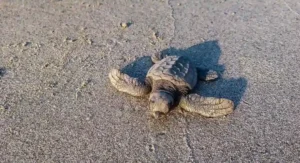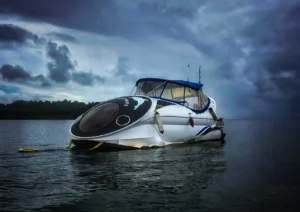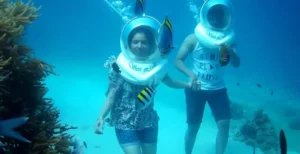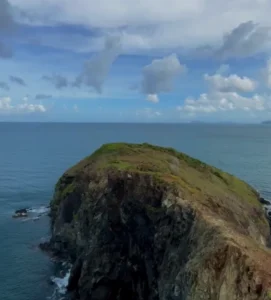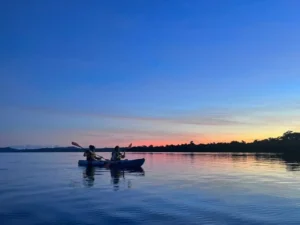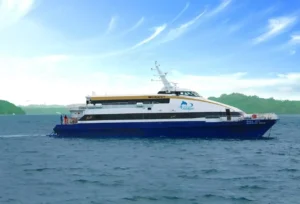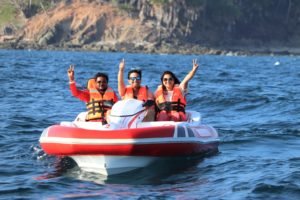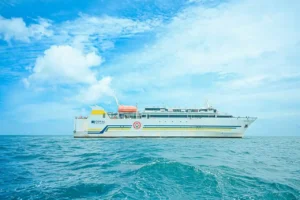The Andaman and Nicobar Islands, a group of picturesque islands in the Bay of Bengal, are celebrated for their lush landscapes, pristine beaches, and rich biodiversity. Among the most awe-inspiring natural events here is the nesting of sea turtles. The islands are home to four species of sea turtles: the leatherback, green, hawksbill, and olive ridley. This travel guide will help you explore the best locations for witnessing turtle nesting in the Andaman Islands, the ideal times to visit, and the best ways to reach these enchanting spots.
- What is Turtle Nesting?
- Locations of Turtle Nesting in the Andaman Islands
- Best Time to Witness Turtle Nesting in the Andaman Islands
- Best Time to Witness Turtle Hatching in the Andaman Islands
- How to Reach the locations of Turtle Nesting in the Andaman Islands
- Experiencing Turtle Nesting in the Andaman Islands
- Be a responsible tourist
- Recommendations for Tourists visiting for Turtle Nesting in the Andaman Islands
What is Turtle Nesting?
Turtle nesting refers to the process where sea turtles come ashore to lay their eggs on sandy beaches. The Andaman Islands are a significant nesting site in South Asia.
During the nesting season, female turtles make their way to the beaches at night, dig holes, and lay around 100 eggs per nest. They create multiple nests (3-7) throughout the season. The eggs hatch after 45-90 days, and the hatchlings instinctively move towards the ocean, guided by the moonlight.
Locations of Turtle Nesting in the Andaman Islands
Diglipur
Diglipur, located in North Andaman, is renowned for its beautiful beaches and rich marine life. It is an excellent place to observe turtle nesting.
- Kalipur Beach: This beach is unique as it hosts all four species of sea turtles. It is a popular site for turtle nesting, making it a must-visit for turtle enthusiasts.
- Ross and Smith Islands: These twin islands are connected by a sandbar, creating a stunning natural spectacle. They are not only great for turtle sightings but also offer picturesque views and clear waters for snorkeling.
- You can read more about Ross and Smith Islands in our blog.
- Lamiya Bay Beach: Known for its serene environment, Lamiya Bay Beach is a quieter spot, ideal for nature lovers who want to observe turtles in a peaceful setting.
- Ramnagar Beach: Another excellent location in Diglipur for watching turtle nesting, Ramnagar Beach is known for its pristine beauty and vibrant marine life.
Rangat
Rangat, situated in Middle Andaman, offers beautiful beaches and mangrove creeks, making it another prime location for turtle nesting.
- Amkunj Beach: Easily accessible and known for its turtle nesting activities, Amkunj Beach is a perfect spot for tourists looking to witness this natural wonder.
- Dhani Nallah Beach: Famous for its long stretch of sand and the mangrove boardwalk that leads to it, Dhani Nallah Beach is a beautiful and accessible location to observe turtles nesting.
Mayabunder
Mayabunder, also in Middle Andaman, is known for its tranquil beaches and turtle nesting sites.
- Karmatang Beach: Often referred to as the ‘Turtle Paradise,’ Karmatang Beach is one of the most significant turtle nesting sites in the Andaman Islands. It’s a must-visit for anyone interested in turtle conservation and natural beauty.
Great Nicobar Island
Great Nicobar, the southernmost part of the Nicobar group of islands, is a critical area for turtle nesting, particularly for the leatherback turtles.
- Anderson Beach, Joginder Nagar, and Campbell Bay: These beaches are crucial nesting sites for various species of turtles and offer diverse wildlife sightings.
- Northern Beach and Southern Beach: Northern Beach is well-protected and is ideal for spotting leatherback turtles. The Southern Beach, although less protected, is significant for green turtles and other species.
- Beaches at the Mouths of Galathea, Alexandria, and Dagmar Rivers: These are vital nesting grounds for leatherback turtles and are important for turtle conservation.
Best Time to Witness Turtle Nesting in the Andaman Islands
The best time to witness turtle nesting in the Andaman Islands varies by species but generally falls between December and April. Here’s a breakdown of the peak nesting times:
- Leatherback Turtles: The peak nesting period is from December to March.
- Green Turtles: These turtles nest year-round, with a peak from February to April.
- Hawksbill and Olive Ridley Turtles: The nesting period for these turtles coincides with the leatherback and green turtles, primarily from December to April.
Best Time to Witness Turtle Hatching in the Andaman Islands
Here’s what you need to know about turtle hatching:
Timing of different Turtle Hatching in Andaman
- Leatherback Turtles: The hatchlings emerge around 60-70 days after nesting, typically from February to May.
- Green Turtles: Nesting peaks from December to March, and hatchlings emerge about 50-60 days after nesting, mainly from February to April.
- Hawksbill Turtles: Hatchlings emerge mainly from February to April.
- Olive Ridley Turtles: Hatchlings emerge about 45-55 days after nesting, typically from March to May.
Tips to Witness Turtle Hatching in Andaman
- Nesting Beaches: Hatchlings emerge from nests dug by their mothers on the sandy beaches of the Andaman Islands, particularly on beaches like Kalipur, Ramanagar, and others mentioned earlier.
- Nighttime Emergence: Hatchlings usually emerge at night to avoid predators and the heat of the sun.
- Guided Tours: Many tour operators and conservation organizations offer guided tours to witness turtle hatchlings. These tours are educational and emphasize the importance of turtle conservation.
How to Reach the locations of Turtle Nesting in the Andaman Islands
In order to reach the turtle nesting sites in the Andaman Islands, you will have to reach Port Blair, the capital city of the Andaman and Nicobar Islands. Port Blair is well connected with major cities on mainland India, and you can find all the details in our blog on ‘How to Reach Port Blair?’
Diglipur
- By Road: Travel from Port Blair to Diglipur by road. The journey takes about 12 hours via the Andaman Trunk Road, passing through beautiful landscapes and several other islands.
- By Sea: Regular ferries/ships from Port Blair to Diglipur are available. The ferry journey offers stunning views of the surrounding islands and the sea.
Rangat
- By Road: From Port Blair, you can drive to Rangat. The journey takes about 7 hours via the Andaman Trunk Road, which is well-connected and scenic.
- By Sea: Ferries from Port Blair to Rangat are also available and provide a scenic route through the islands.
Mayabunder
- By Road: A 10-hour drive from Port Blair via the Andaman Trunk Road will take you to Mayabunder. The road trip is an adventure in itself, offering glimpses of the local flora and fauna.
- By Sea: Ferries from Port Blair to Mayabunder are available and offer a picturesque journey through the Andaman Sea.
Great Nicobar Island
- By Air: Fly to Port Blair and then take a helicopter or a ship to Campbell Bay in Great Nicobar. The helicopter service is faster but needs to be booked in advance.
- Note: Helicopter services in Andaman are limited and are majorly used by government officials and islanders (in case of emergency). It is better to opt for other modes of transport.
- By Sea: Ships from Port Blair to Campbell Bay operate regularly. The sea journey takes approximately 24-30 hours, offering ample time to soak in the beauty of the ocean.
Experiencing Turtle Nesting in the Andaman Islands
When visiting these nesting sites, here’s what you can expect:
- Kalipur Beach (Diglipur): This beach is exceptional because it hosts all four species of sea turtles. Witnessing turtles nesting here is a comprehensive experience that showcases the diversity of marine life in the Andaman Islands.
- Ross and Smith Islands (Diglipur): Accessible by boat from Diglipur, these islands offer a unique sandbar experience and the possibility of turtle sightings. The clear waters are perfect for snorkeling and exploring marine life.
- Lamiya Bay and Ramnagar Beaches (Diglipur): These more secluded beaches offer a peaceful experience, ideal for those looking to enjoy nature and observe turtles without large crowds. You might need a permit to visit the Lamiya Bay beach.
- Aamkunj and Dhaninallah Beaches (Rangat): These beaches are easily accessible and known for their natural beauty. The mangrove boardwalk leading to Dhaninallah Beach adds a unique element to your visit.
- Karmatang Beach (Mayabunder): Known as ‘Turtle Paradise,’ Karmatang Beach is a must-visit for turtle enthusiasts. The beach is well-maintained, and local conservation efforts are evident.
- Northern and Southern Beaches (Great Nicobar Island): Northern Beach is well-protected and ideal for leatherback sightings, while the Southern Beach, although less protected, offers sightings of green turtles and other species. Both beaches are critical for turtle conservation and provide a unique insight into the lives of these magnificent creatures.
- Note: Being a biosphere reserves, turtle nesting sites in Great Nicobar Island are protected and might not be accessible to tourists.
Be a responsible tourist
To ensure the protection of these endangered species and their habitats, it is essential to practice responsible tourism. Here are some guidelines:
- Avoid Disturbing Turtles: Do not use flash photography or bright lights, as they can disorient turtles and disrupt their nesting process.
- Maintain Distance: Watch turtles from a respectful distance to avoid causing stress to the animals. This helps in protecting their natural behavior and environment.
- Follow Local Guidelines: Adhere to the rules and regulations set by local authorities and guides. They are designed to protect the turtles and ensure a safe and enjoyable experience for visitors.
- Support Conservation: Engage in eco-friendly tourism practices and support local conservation initiatives. This can include participating in beach clean-ups, contributing to turtle conservation programs, and spreading awareness about the importance of protecting marine life.
Recommendations for Tourists visiting for Turtle Nesting in the Andaman Islands
- Join Guided Tours: Many tour operators offer eco-tours that ensure minimal disturbance to the turtles. These tours are informative and provide a safe way to witness turtle nesting and save you from the hassle of multiple bookings.
- You can book a tour with us.
- Support Local Communities: Buy local products and hire local guides. This helps support the economy and ensures that conservation efforts benefit the local population.
- Stay Informed: Learn about the significance of turtle conservation and the challenges these species face. Being informed enhances your experience and allows you to contribute meaningfully to conservation efforts.
The Andaman and Nicobar Islands offer a unique and unforgettable opportunity to witness the awe-inspiring phenomenon of turtle nesting. By visiting these nesting sites, you not only experience a fascinating aspect of marine life but also contribute to vital conservation efforts. Plan your trip with respect for nature, adhere to responsible tourism practices, and you will leave with unforgettable memories and a deeper appreciation for the delicate balance of marine ecosystems. Your visit can make a significant difference in protecting these magnificent creatures for future generations.
Read More: Things to do in Andaman.
